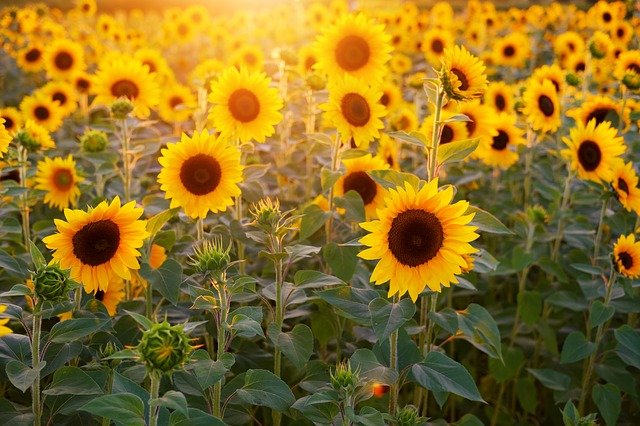Sunflower Characteristics
Sunflower plant (Helianthus annus) belongs to the composite family.
The plant has a compound flower made up of a group of smaller flowers called florets.
These florets are clustered together to form a dense head called the capitulum, which is surrounded by a ring of overlapping green sepal-like bracts which form the involucre.
The florets are of two types:
- Disc florets
- Ray florets.
The disc florets occupy the center of the capitulum while the ray florets are the marginal ones immediately inside the involucre.
The corolla of a disc floret is brownish, regular, and tubular in shape. It consists of five petals that fuse at the bases, leaving the tips free.
The calyx is very small and scale-like.
The pistil consists of an ovary with two fused carpels containing only one ovule, a long style, and two stigmas.
There are five stamens joined to the corolla.
The anthers are also joined together to form a tube round the syle.
The corolla of a ray floret is golden-yellow, strap-shaped, and showy.
Its ovary does not contain ovules and it has no stamen.
It is a sterile floret.
How do Sunflower Reproduce
The sunflower (Helianthus annus) is protandrous and entomophilous.
The sunflower needs to be pollinated before producing seeds.
While Helianthus annus is pollinated by insects, mostly bees, the flower can self-pollinate or cross-pollinate.
Sunflower pollination Facts
Sunflower reproduces sexually since a flower has both male and female parts.
When the stamens of a disc floret mature, the anthers split along their inner surfaces to shed their pollen into the tube formed by the joined anthers.
During the initial stage of development of a disc floret, the style is short and lies below the anther tube. The surfaces of the two stigmas are pressed tightly together so that the mass of pollen in the anther tube can not reach them.
As the style starts to elongate, it pushes the pollen out of the anther tube.
The two stigmas open out of the anther tube to expose their surfaces.
The arrangement of the disc florets on a capitulum is such that the youngest ones are in the very center with the older ones surrounding them.
Therefore, by the time the younger ones shed and expose their pollen, the older ones have already exposed their astigmatic surfaces.
This arrangement of the disc florets favors cross-pollination.
As the bee visits the sunflower, it will first settle on the center of the capitulum.
There it collects pollen on its legs and the undersurface of its body.
With its load of pollen, the bee crawls outwards.
Some of the pollen on the bee’s body sticks to the astigmatic surfaces of the outer disc florets, thus effecting cross-pollination.
However, the flower ensures that self-pollination will take place if cross-pollination fails.
This is brought about as the flower gets older.
The stigma curls backward and picks up some of its own pollen which is left on the style.
